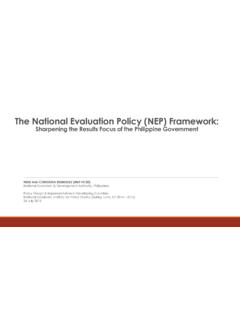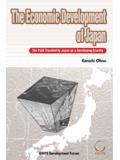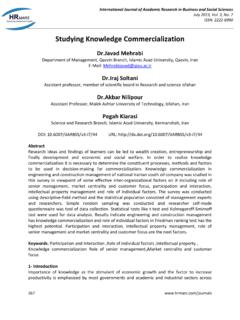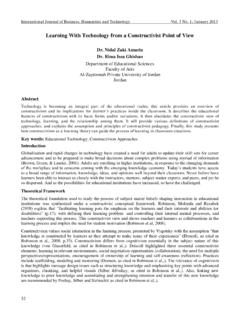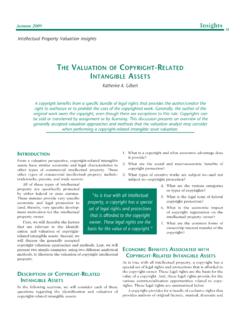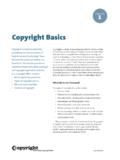Transcription of Introducing KAIZEN in Africa - GRIPS
1 Introducing KAIZEN in Africa Edited by GRIPS Development Forum October 2009. GRIPS Development Forum 2009. Cover photo Kenichi Ohno Contact: GRIPS Development Forum National Graduate Institute for Policy Studies 7-22-1 Roppongi, Minato-ku, Tokyo, 106-8677 Japan Phone: +81-3-6439-6337. Fax: +81-3-6439-6010. E-mail: URL: Introducing KAIZEN in Africa Edited by GRIPS Development Forum Contents Foreword Chapter 1 Introduction 1. Izumi Ohno, Kenichi Ohno, and Sayoko Uesu Chapter 2 Needs for KAIZEN Activities by African Manufactures 13. Ayako Ishiwata Chapter 3 KAIZEN : Quality, Productivity and Beyond 23.
2 Akio Hosono Chapter 4 JICA-Supported Project for Quality and Productivity Improvement in Tunisia 39. Tsuyoshi Kikuchi Chapter 5 Productivity and Quality Improvement: JICA's Assistance in KAIZEN 55. Takafumi Ueda < Contributors >. Izumi Ohno: Professor, National Graduate Institute for Policy Studies Kenichi Ohno: Professor, National Graduate Institute for Policy Studies Sayoko Uesu: Research Associate, National Graduate Institute for Policy Studies Ayako Ishiwata: Senior Consultant, Because Institute Co., Ltd. Akio Hosono: Professor, National Graduate Institute for Policy Studies Tsuyoshi Kikuchi: Senior Industrial Consultant, Japan Development Service Co.
3 , Ltd. Takafumi Ueda: Senior Advisor on Private Sector Development, Japan International Cooperation Agency Foreword This book aims to introduce the basic concept and characteristics of KAIZEN to African audience and explain how Japan has implemented KAIZEN assistance in developing countries. It also discusses the factors that affect the performance of international KAIZEN assistance. KAIZEN means continuous improvement of productivity and quality, based on a participatory process involving the entire workforce. With no requirement for huge investment, it is a low-cost approach to productivity and quality improvement.
4 Moreover, KAIZEN is applicable not only to the manufacturing sector but also to the service sector, public organizations, and non-profit organiza- tions. KAIZEN is one of the standard menu items of Japanese industrial support in developing countries. It has been widely practiced in Asia by Japanese firms and their local subcontractors, and increas- ingly in Latin America and Eastern Europe as well. Nevertheless, knowledge-sharing and imple- mentation of KAIZEN has so far been limited in Sub-Saharan Africa , partly due to the relatively small presence of Japanese business activities in the continent.
5 Since late 2008, the GRIPS Development Forum has been engaged in industrial policy dialogue with the Ethiopian Government, in collaboration with the Japan International Cooperation Agency (JICA). Compilation of this book was prompted by strong interest shown by Prime Minister Meles Zenawi in Japanese development experiences and his request for the Japanese Government to in- troduce KAIZEN in Ethiopian firms, modeled on JICA's KAIZEN assistance in Tunisia. We are grateful to all contributors who responded to our initiative in a fairly short period.
6 We are also very grateful to the Embassy of Japan and JICA for providing valuable support and inputs to this endeavor. We sincerely hope that this publication will motivate the interested readers to go deeper to find practical suggestions from other documents and, furthermore, stimulate the discussion on how Japan's KAIZEN assistance can complement the Western management approach, which is more widely practiced in Africa . Tokyo, October 2009. GRIPS Development Forum Chapter 1. Introduction Izumi Ohno, Kenichi Ohno, and Sayoko Uesu The KAIZEN philosophy assumes that our way of life be it our working life, our social life, or our home life should focus on constant-improvement ef- forts.
7 In my opinion, KAIZEN has contributed greatly to Japan's competitive success. (Imai, 1997, ). In Japanese management, KAIZEN means continuous improvement involving the entire workforce from the top management to middle managers and The origin of Japan's KAIZEN move- ment was the quality control method imported from the United States (US) in the post WW2 pe- riod. Japan assimilated and developed this as its own management practice method which later even surpassed performance in the US. This adapted method, which became known as KAIZEN , spread rapidly among Japanese companies including a large number of small and medium-sized enterprises.
8 It subsequently spread overseas as Japanese business activities expanded abroad and Japanese companies began to build production networks with local companies. Japan offers assistance for KAIZEN in many developing countries through private channels such as intra-company technology transfer and support for local suppliers, as well as through public chan- nels such as official development assistance (ODA) and guidance provided by various public or- ganizations. By now, KAIZEN assistance is one of the standard menu items of Japanese industrial support in developing countries.
9 While such assistance initially focused on East Asia where Japan had active business partnerships, it has now been implemented widely in other regions including South Asia, Latin America and Eastern Europe. However, as far as Sub-Saharan Africa is con- cerned, knowledge sharing and implementation of KAIZEN has been rather limited except in a few notable cases (see footnote 5). There are a lot of unexploited benefits of selective and well cali- brated application of KAIZEN from which African countries can draw upon to improve their pro- duction and service There is also a need for Japan to more actively propagate the idea of KAIZEN in Africa as an addi- tional menu item in their industrial development strategies.
10 This is partly because of increased in- terest among African countries in the growth agenda in general and in East Asia's industrial 1. KAIZEN literally means improvement: change (kai) for good (zen). 2. While many documents stress the importance of continuous improvement in Africa , especially in relation to trade promotion strategy and activities like Technical Barriers to Trade (TBT) and Sanitary and Phytosanitary measures (SPS) (for example, see Foss (2004, )), their recommendations do not discuss the specific actions needed in detail.




